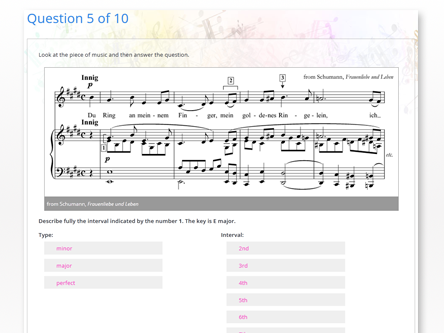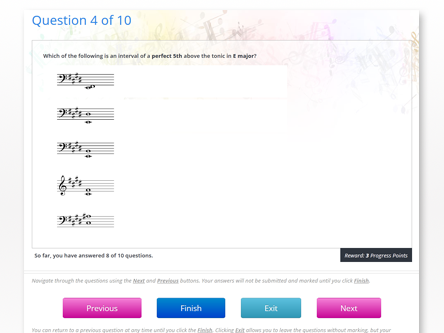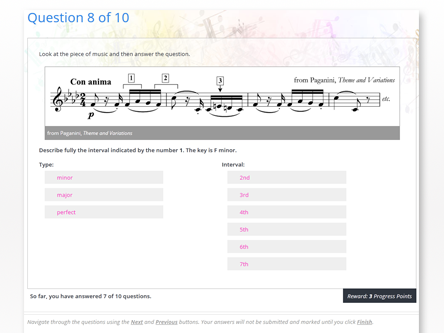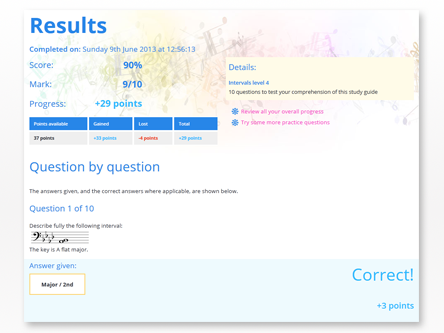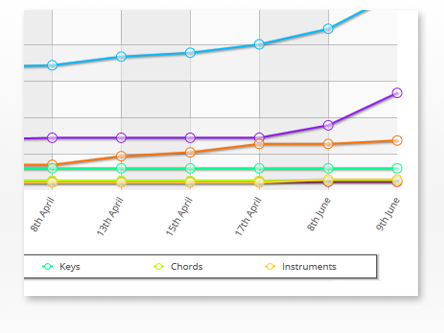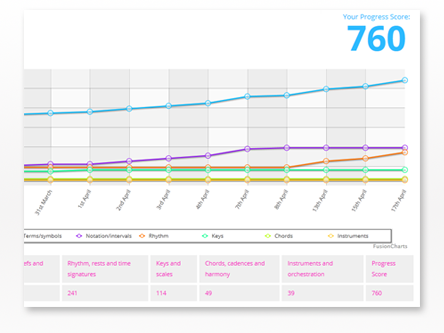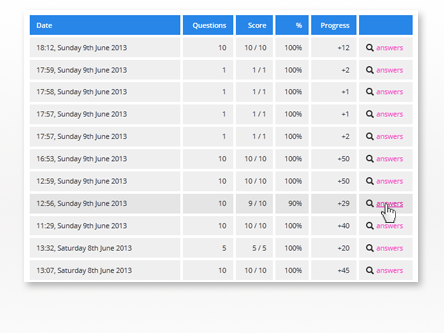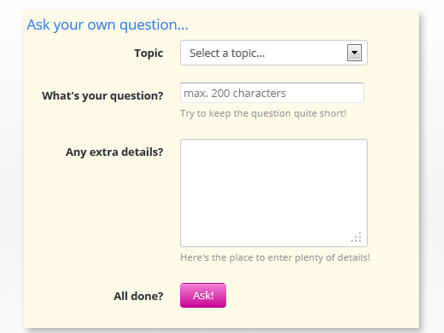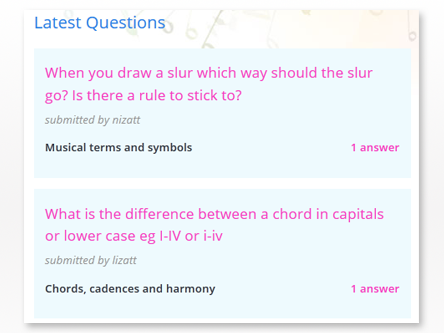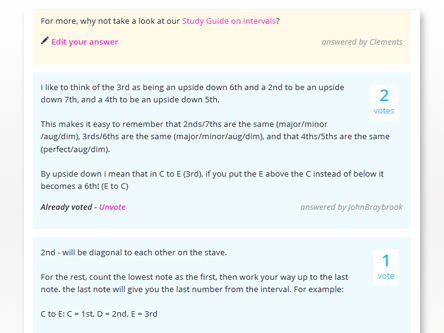Features
Interactive music theory study guides
and practise exam questions
Clements Theory is designed to make studying music theory as straightforward as possible.
Through a combination of comprehensive study guides covering the theory of music from the very beginning, and interactive music theory practice questions, you can track your progress in each subject area. Help is always at hand from The Clements Theory team of experts and from the Q&A area.
Clements Theory covers Associated Board (ABRSM) and Trinity College (TCM) Grades 1 to 5, including the all-important Grade 5 Theory.
Find out more about the study guides, music theory practise questions, progress-tracking tools, and the Q&A area below.
Music Theory Study Guides
Clements Theory guides students step-by-step through music theory helping them to understand and remember the main topics of music theory:
- Notation, clefs and intervals
- Rhythm, rests and time signatures
- Keys and scales
- Chords, cadences and harmony
- Musical terms and symbols
- Instruments and orchestration
Clear and comprehensive
Clements Theory study guides are prepared by skilled musicians and regularly revised to remain as comprehensive, clear and easy-to-follow as possible. Each study guide comes with a revision assignment with practice questions drawn from Clements Theory’s huge question bank, to reinforce students’ knowledge of the material in the guide.
Step-by-step
Each study guide is given a level from 1 to 5, corresponding approximately to the syllabus of Trinity College of Music and Associated Board Music Theory Grades. You can be confident that if students have covered all the material in a Clements Theory "level", they have covered the material found in the corresponding TCM or ABRSM syllabus - and a little more.
Study and practice
Students can test their knowledge. When your students have completed reading each study guide, Clements Theory provides a set of assignments for them to take, which include a set of practice questions tailored to the material contained in the study guide to test their comprehension.
Expert guidance
Clements Theory study guides are written by experts, but are also easy to follow and written in plain language to ensure that they are as straightforward as possible.
Select a topic to browse the study guides...
Notation, clefs, and intervals
Rhythm, rests, and time signatures
Keys and scales
Level 3
Chords, cadences and harmony
Level 1
Level 2
Musical terms and symbols
Level 5
Instruments and orchestration
Level 1
Level 2
Level 3
Level 5
Music Theory Practice Exam Questions
Clements Theory provides access to thousands of graded exam-style music theory questions, testing every aspect of music theory.
The practice questions can be tackled in small groups of 10, covering a specific topic and at a chosen level of difficulty, or at random. You can also set "mock exams", providing more questions at a specific grade of difficulty.
Questions are available to practice in all the key areas covered by the study guides:
- Musical terms and symbols
- Notation, clefs and intervals
- Rhythm, rests and time signatures
- Keys and scales
- Chords, cadences and harmony
- Instruments and orchestration
You can even add the pressure of a time limit based on the difficulty and number of music theory questions presented, and always provides a realistic challenge. If your students can beat the Clements Theory clock, they should have no trouble in a real exam!
Thousands of practice questions at all levels
Clements Theory includes thousands of practice questions covering all the material in the Associated Board and Trinity College music theory exams from Grade 1 Theory to Grade 5 Theory (and beyond), so whatever your students’ level, you'll find plenty to test them.
Track Progress in Music Theory
A key part of learning with Clements Theory is the ability to track your students' progress and improvement in music theory using our unique Progress Points.
Every time your students take a music theory practice test the answers are recorded, and they will score a certain number of Progress Points. Questions range in difficulty from Grade 1 Theory to Grade 5 Theory across all of the key curriculum areas:
- Musical terms and symbols
- Notation, clefs and intervals
- Rhythm, rests and time signatures
- Keys and scales
- Chords, cadences and harmony
- Instruments and orchestration
Progress Points
Each correct answer scores 1 Progress Point per level of difficulty. For example:
1 x Level 1 correct answer = 1 point
1 x Level 3 correct answer = 3 points
1 x Level 5 correct answer = 5 points
However, 1 point will be lost per grade of difficulty for every incorrect answer. For example, if you answered 10 Grade 4 questions correctly, but answered 5 Grade 5 questions incorrectly the total progress score would be:
10 x Level 4 correct answers = 40 points
minus 5 x Level 5 incorrect answers = 25 points
Total = 15 Progress Points
Subject by subject
You can monitor your improvement in each topic with individual progress scores for each area. This allows you to see at a glance if, for example, your keys and scales are great, but your chords and cadences could use some work.
Your target
The target number of Progress Points corresponds to the Associated Board or Trinity College grade you are trying to achieve - for example, 100 points for Grade 1 or 500 for Grade 5. If you can keep your Progress Score consistently above the target in all subject areas, you can be confident that you're ready for the exam!
Music Theory Q&A
You and your students are never alone when studying music theory with Clements Theory - you have access to the comprehensive Clements Theory Q&A section
You can submit music theory questions at any time and receive help or comments from other members of the Clements Theory community. What's more, our experienced staff are on hand to provide accurate and clear answers to any music theory question you can throw at them.
Recent questions
Some of the questions recently asked by Clements Theory users (and answered by other students and the Clements Theory staff) are:
- How do you know which interval is a semitone?
- I have trouble remembering key signatures so does anyone have an easy way of remembering them?
- How do you remember the minor melodic and harmonic scales easily?
- What is 9/8 (time signature, nine quavers per bar) in simple time?
- I know that for a melodic minor you raise 6th and 7th on the way up and the normal key signature on the way down, but I don't how to do A Minor?
